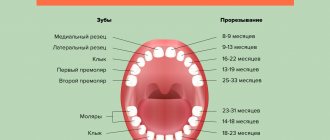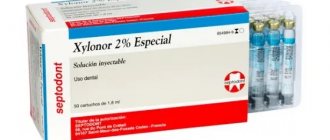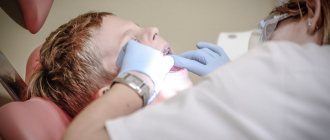Stomatitis is a common disease in childhood. But this does not make it easy, much less dangerous. Often, with insufficient attention to the baby’s oral cavity, it becomes chronic and can recur up to several times a year.
This risk can be eliminated only by timely and competent treatment of stomatitis in children. What are its features? What drugs can be used? And is it possible to use folk remedies? This was told by a periodontist, chief physician of the “All Ours!” network of dental clinics. Igor Repin .
Stomatitis in children - causes
Children's curiosity is an integral “attribute” of a child’s development. The baby experiences the world in different ways. Tactile sensations and visual contact with new and interesting objects are important to him. And kids often try the world to their teeth, and this is how they usually get acquainted with toys, household items, even clothes and other, not the cleanest things.
Many parents do not stop their baby’s attempts to put various objects into his mouth. They believe that the freer the baby’s acquaintance with the outside world, the better. Perhaps, from a psychological point of view, this is true. However, this position has the opposite relation to the issue of hygiene and health. Stomatitis in children's mouths often appears as a consequence of such contacts. Toys, personal belongings, and simply dirty hands become “suppliers” of microorganisms that penetrate the baby’s oral cavity.
pixabay.com/
The oral mucosa has its own, local immunity. But in childhood he is still in the initial stage of his development. Children's immunity is immature; it cannot effectively resist external threats. If he encounters an unfamiliar pathogen, an inflammatory reaction begins.
“At an early age, children put everything in sight into their mouths. And in older people they often cannot get rid of the habit of sucking a finger or chewing a pen cap,” comments periodontist Igor Repin. — Together with foreign objects, microbes that are not specific to it enter the oral cavity. For this reason, stomatitis develops.”
Types of disease
Depending on the causative agent of the disease, there are several types of stomatitis in children.
Viral . A child’s body encountering any virus, including ARVI, can provoke the development of a whole range of unpleasant symptoms: from a typical runny nose and sore throat to inflammation of the eyes and mouth. As a rule, viral stomatitis is diagnosed by a pediatrician, to whom parents turn about the “main” illness of the baby. The course can be different - both acute and mild. It all depends on the baby’s immune reaction: stomatitis in a child of the first year of life usually manifests itself more clearly than in children with a more mature immune system, for example, at five years old.
Viral herpetic . Herpes viruses cause severe inflammation in the oral cavity. Inflammatory elements look like bubbles filled with liquid. Over time, they burst and their surface becomes crusty. From the first day of the disease, the baby experiences significant discomfort: the foci of infection itch, swell, and after the vesicles burst, they turn into painful ulcers. Herpes stomatitis often occurs in children aged one to three years and occurs in an acute form with high fever, severe impairment, and refusal to eat. Formula-fed babies are especially susceptible to the disease, since infants receive partial immune protection from herpes from their mother's milk.
pixabay.com/
Candidiasis . The yeast-like fungi Candida cause inflammation in the mouth. They are not foreign to the human body. These microorganisms are part of the microflora of the intestines, skin, and mucous membranes. A healthy immune system controls the number of fungal colonies. But when the immune system is weakened or “distracted” by the fight, for example, against a viral infection, the number of fungi can increase sharply. This can also occur when microorganisms enter the mouth from dirty hands or shared toys in the daycare center. In the oral cavity, this causes inflammation with a whole range of characteristic symptoms. A white cheesy coating on the tongue and the inner surface of the cheeks, cracking of the corners of the mouth and the appearance of red spots here - “stuck” - all these are typical signs of “thrush”. In childhood, it is often accompanied by high fever, and if not detected in time, it can be complicated by a bacterial infection.
Aphthous . A deficiency of certain nutrients in the diet negatively affects the state of the child’s immune system and oral mucosa. It has been established that with a lack of vitamin C, B vitamins, and minerals such as zinc and iron in food, the risk of developing aphthous stomatitis increases. With this disease, the mucous membranes are covered with aphthae - focal lesions of the upper layer of the epithelium. Stomatitis in children is localized on the tongue, under it, on the lips. Aphthae are painful, even if they are few in number, and in severe forms they occur in large quantities. The development of aphthae is often preceded by oral trauma. If treatment is untimely or incorrectly selected, the disease can become chronic and “return” regularly.
Traumatic . A sore in the mouth can appear for various reasons. Even teething causes injury to the gum tissue, swelling, pain and fever. Similar symptoms can be observed when an accidental injury with a sharp object or a fall in which the baby damages the inner surface of the lips or cheeks. At an older age, the cause of injury may be wearing a plate to correct the bite or braces to straighten the teeth. The formation of a wound becomes an “entry” gate for infection, so any damage in the oral cavity must be treated.
“It is impossible to determine the tendency to develop stomatitis or predict its occurrence,” comments doctor Igor Repin. “There is no immunity to this disease, so it can develop many times in childhood. Some children are at increased risk. Children with chronic diseases of the ENT organs are more prone to stomatitis.”
pixabay.com/
What could be the causes of a sore throat?
Most often, sore throats are caused by viruses. Less commonly, sore throats occur due to bacterial infections. Viral pathogens such as corona virus, rhinovirus, adenovirus, influenza and parainfluenza are the most common and usually present as a cold. Other viral infections that may present with a sore throat are the Epstein-Barr virus and HIV, which lead to the development of a sore throat early in the disease.
Recurrent tonsillitis may occur due to cytomegalovirus or fungal infections in young patients with immunodeficiency.
Among bacterial infections, group A beta-hemolytic streptococcus (GABHS) is the most common cause of bacterial sore throat. It accounts for 15–36% of cases of acute pharyngitis in children in developed industrial countries. Other pathogens may include streptococci types C and G.
Rarer causes of sore throat include infections with Staphylococcus aureus, Mycoplasma, Chlamydia pneumoniae, Moraxella catarrhalis and Yersinia.
Fusobacterium necrophorum infection is an uncommon infection that begins with fever and sore throat and may subsequently develop into Lemierre's syndrome, which is characterized by blood poisoning, thrombosis of the internal jugular vein, and at least one metastatic site of infection.
Another group of causes of sore throat in children are peritonsillar, retropharyngeal and lateral pharyngeal abscesses, which arise due to the spread of infection from local sources, for example, bacterial tonsillitis. Along with fever and sore throat, these cases may present other symptoms such as painful swallowing, drooling, trismus, visible swelling under the lower jaw and deviation of the uvula away from the source of inflammation.
Allergies can also be the cause of a sore throat, especially when it is complicated by nasal bleeding. Irritants such as dust, tobacco and silt stove smoke, and chemical air pollutants can lead to chronic sore throat.
Talking for a long time in a raised voice or shouting for a long time also lead to a sore throat.
A sore throat can also occur due to damage to the larynx by stomach acid due to gastroesophageal reflux disease (GERD).
What does stomatitis look like in children?
The inflammatory process in the oral cavity can manifest itself in different ways. Its course is determined by the type of pathogen, so stomatitis of a herpetic nature will manifest itself differently from a disease caused by a fungal infection. The presence of plaque in the oral cavity, its color and location will tell the doctor about the type of pathogen. However, often the characteristic symptoms can be blurred.
At the same time, foci of inflammation always appear in the mouth - aphthae and ulcers. The first ones affect the upper layers of the mucous membranes, while the deeper layers remain unaffected. Therefore, aphthae, as a rule, heal faster and disappear without a trace. Ulcers are deep-seated lesions of the tissues of the oral cavity. Against this background, severe pain, swelling, and disturbances in the child’s well-being may be observed.
“Aphthae or ulcers can be localized on any part of the mucous membrane, but most often - closer to the site of infection,” said Igor Repin.
However, the disease is not limited to just damage to the oral cavity. Unlike stomatitis in adults, which usually occurs in a mild form and does not cause other manifestations other than discomfort at the site of infection, in childhood the picture of the disease looks different. There is an increase in temperature with stomatitis in a child. Disturbances in bowel movements and sleep are typical.
The body reacts violently to the local inflammatory process. The baby becomes whiny, capricious, and refuses to eat. At a younger age, the child shows discomfort and pain by crying. Children a little older can already tell their parents about painful sensations in the mouth.
It is imperative to pay attention to these complaints. With timely treatment, you can quickly help your child. If the disease is allowed to develop, the baby’s well-being will worsen. A secondary, already bacterial infection may “join” the primary acute process. And then treating stomatitis in a child will have to take much longer and use a larger range of medications.
pixabay.com/
Symptoms of gingivitis in adolescent children
An inflammatory disease that affects gum tissue can be recognized by its characteristic symptoms.
The main signs of gingivitis:
- redness, swelling of the gums;
- bleeding when brushing teeth and chewing hard food;
- the appearance of bad breath;
- hypertrophy of gum tissue;
- the appearance of soft and hard dental deposits on the crowns of teeth;
- carious formations.
All of the above symptoms indicate the need to see a dentist!
Effective treatment of stomatitis in children
“A mother who discovers stomatitis in her child needs to immediately go to the doctor,” noted Igor Repin. “Without unnecessary speculation about the possibility of home treatment with folk remedies.”
Since stomatitis in childhood rarely occurs in a mild form, accompanied by fever and severe impairment, it is necessary to call a pediatrician at home. If the condition is not disturbed, you can come to an appointment with your local pediatrician or consult a dentist. But in each case, the initial examination should be carried out by a specialist, and as soon as possible, since delay can lead to dangerous consequences.
The sooner you start treatment, the faster and easier it will be to suppress the acute process. If time is lost and a bacterial infection joins the primary inflammation, the child’s condition will worsen. It will no longer be possible to normalize it without the use of antibiotics.
Antiviral agents are used to treat viral stomatitis, antifungal agents are used for candidal stomatitis, and antibiotics are used for secondary infections. Only a doctor should prescribe these drugs. Taking into account the child’s age, his condition, and the characteristics of the course of the disease, the specialist will select a safe and effective dosage of the drug. In addition to systemic therapy, drugs are prescribed for local treatment of the oral cavity. They reduce pain and speed up wound healing.
pixabay.com/
Why does my child have a toothache?
Despite the fact that pediatric dentistry is now very developed, we do not lag behind either our European or American colleagues, a lot of hygiene and preventive means are available, many parents do not attach due importance to the health of baby teeth.
Misconceptions of parents:
- there is no need to go to the pediatric dentist if nothing hurts;
- a child of 3-6 years old can brush his teeth himself (although he cannot wash his hair himself);
- You don’t have to treat baby teeth; if they hurt, we’ll remove them. It's still temporary.
For such parents, a child’s complaint of tooth pain is always a surprise. Often these are holidays or all evening.
Let's figure out why baby teeth hurt and what to do if a child has a toothache and how to relieve the pain.
Baby teeth in children are indeed different from permanent teeth. They are more fragile and vulnerable, as they have a different structure and enamel thickness. But they have a complete structure. Roots, nerves, vessels. The enamel is thinner, there are more blood vessels. This means that they collapse faster and become inflamed stronger and brighter.
Very often, caries and pulpitis in children are initially asymptomatic. Their presence can be detected during examination and after X-ray diagnostics.
Such asymptomatic pulpitis can be cured quickly, in one visit, preserving the living pulp in the roots. This is a very good method; root resorption will be more physiological.
Only local anesthesia can be used (an injection into the gum near the tooth).
If the carious cavity is deep, the tooth decay is large, the child has complaints (the tooth hurt from the cold for a long time, it hurt at night, I had to take painkillers), then it will no longer be possible to leave the pulp alive in the canals, it will be inflamed. During treatment, you will have to remove the entire pulp completely (as in adults) and fill the canals with calcium paste, since the roots will dissolve and the paste along with them.
It is not always possible to complete such treatment in one visit, since it is difficult for a child to spend so much time in a chair. Nitrous oxide sedation is often used because the treatment is lengthy and it is difficult to numb a severely inflamed pulp.
The child complains for 1-2 days, but the parents do not attach any importance to this.
Then pulpitis turns into periodontitis. This is when the nerve has already died, pus appears and the inflammation goes deeper. This happens in 2 HOURS!!! You see how fast!
Edema (flux) in children develops right before their eyes, and facial asymmetry appears within a day. This is inflammation of the periosteum (periostitis) and inflammation of the bone itself (osteomyelitis).
In such a situation, urgent tooth extraction and antibiotics are indicated.
With such an acute process and the presence of pus, it is impossible to numb the pain around the tooth on an outpatient basis, as we do during treatment. Pus interferes with the action of the pain medication.
In this case, removal of a baby tooth occurs only under general anesthesia!!!!!!
Our dear parents:
- Help your children care for their baby teeth, and clean the back teeth and hard-to-reach places yourself!
- Bring your child for preventive examinations without waiting for his complaints. Remember, complaints appear very late, and often we do not have time to save the tooth.
- Remember, a child who started meeting the dentist with toothache and gumboil has a more difficult time adapting to dental treatment
- If your child tells you that they have a toothache, DO NOT IGNORE them. Give Nurofen in an age-appropriate dosage and immediately make an appointment with a pediatric dentist. Remember, pulpitis turns into periodontitis in 2 hours.
- Do not refuse to use nitrous oxide or general anesthesia, since it is sometimes impossible to make acute pulpitis painless or remove an inflamed tooth, no matter how much we want.
- The health of your child is in your hands. Prevention is always cheaper and more pleasant than treatment. The dentist will always teach you how to care for children’s teeth and select the necessary means for prevention so that your child will never know what a toothache is.
Drugs for stomatitis in children
As a rule, hospitalization of the patient when an inflammatory process in the oral cavity is detected is not required. Treatment of stomatitis in a child at home, following the doctor’s recommendations, will be effective and successful.
In childhood, anti-inflammatory and wound-healing agents are used for local treatment of the oral cavity. When used in combination as prescribed by a doctor, they help quickly normalize the child’s condition.
- Metrogil denta . An antimicrobial agent with two active antibacterial components in its composition. It is applied to the affected areas of the mucous membranes in a thin layer twice a day. Treatment is continued for up to ten days.
- Holisal . Gel for local treatment of the oral cavity, which has anti-inflammatory and analgesic effects. The anesthetic effect can last up to eight hours, and it can be used before meals to reduce pain.
- Kalgel . A drug with analgesic and antimicrobial effects, approved for use in children from three months. Apply a thin layer to the affected area of the mouth and rub in gently. Use up to six times a day.
- Chamomile decoction . Has an anti-inflammatory effect. In complex treatment, it accelerates wound healing and recovery.
“There are many drugs for the treatment of stomatitis in childhood,” added Igor Repin. — Some have an antiseptic effect, that is, they suppress the development of pathogenic microflora. Others accelerate wound healing, while others isolate ulcerative lesions from food exposure. With the right choice of therapy, the disease goes away quite quickly - within a week or 10 days.”
There is no specific prevention of the disease. But it is obvious that compliance with hygiene rules is an important factor in protecting against stomatitis in childhood. Therefore, despite the desire to allow the child to freely explore the world and objects around him, it is important to monitor the cleanliness of these objects.
Do not allow your child to put dirty toys in his mouth; teach him to wash his hands before eating, after using the toilet, and when returning home from the street. Monitor the health of your baby's teeth, and if any symptoms that cause concern appear, consult a doctor. Your main assistants in the treatment of stomatitis in a child should be pediatricians and dentists, and not personal experience and especially the instructions of older relatives.








